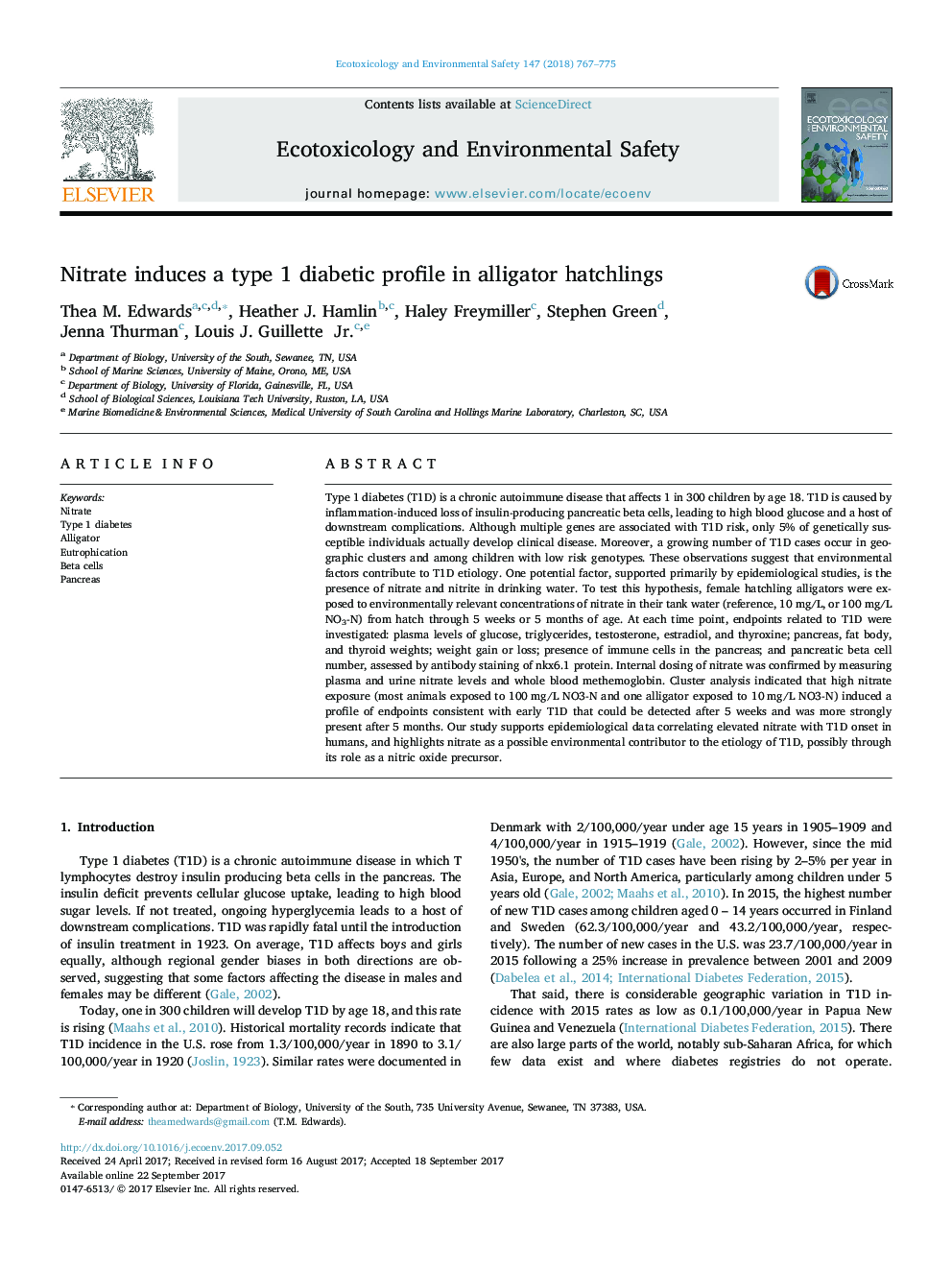| کد مقاله | کد نشریه | سال انتشار | مقاله انگلیسی | نسخه تمام متن |
|---|---|---|---|---|
| 5747831 | 1618917 | 2018 | 9 صفحه PDF | دانلود رایگان |
- Alligators absorbed nitrate from their tank water in a dose-dependent fashion.
- Cluster analysis revealed that high nitrate induced early T1D physiology.
- The study supports human epidemiological links between nitrate exposure and T1D.
Type 1 diabetes (T1D) is a chronic autoimmune disease that affects 1 in 300 children by age 18. T1D is caused by inflammation-induced loss of insulin-producing pancreatic beta cells, leading to high blood glucose and a host of downstream complications. Although multiple genes are associated with T1D risk, only 5% of genetically susceptible individuals actually develop clinical disease. Moreover, a growing number of T1D cases occur in geographic clusters and among children with low risk genotypes. These observations suggest that environmental factors contribute to T1D etiology. One potential factor, supported primarily by epidemiological studies, is the presence of nitrate and nitrite in drinking water. To test this hypothesis, female hatchling alligators were exposed to environmentally relevant concentrations of nitrate in their tank water (reference, 10Â mg/L, or 100Â mg/L NO3-N) from hatch through 5 weeks or 5 months of age. At each time point, endpoints related to T1D were investigated: plasma levels of glucose, triglycerides, testosterone, estradiol, and thyroxine; pancreas, fat body, and thyroid weights; weight gain or loss; presence of immune cells in the pancreas; and pancreatic beta cell number, assessed by antibody staining of nkx6.1 protein. Internal dosing of nitrate was confirmed by measuring plasma and urine nitrate levels and whole blood methemoglobin. Cluster analysis indicated that high nitrate exposure (most animals exposed to 100Â mg/L NO3-N and one alligator exposed to 10Â mg/L NO3-N) induced a profile of endpoints consistent with early T1D that could be detected after 5 weeks and was more strongly present after 5 months. Our study supports epidemiological data correlating elevated nitrate with T1D onset in humans, and highlights nitrate as a possible environmental contributor to the etiology of T1D, possibly through its role as a nitric oxide precursor.
191
Journal: Ecotoxicology and Environmental Safety - Volume 147, January 2018, Pages 767-775
